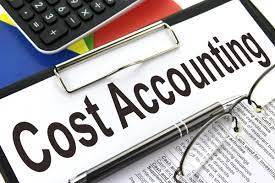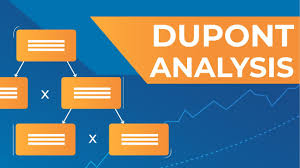Want help to write your Essay or Assignments? Click here
Cost Accounting Basics and Components
ORDER INSTRUCTIONS
Overview
Complete a 4-part assessment in which you prepare and make decisions using statements for cost of goods manufactured (COGM) and cost of goods sold (COGS); record and make journal entries for scrapping unusable materials; compute and prepare payroll journal entries in a cost accounting system; and determine factory overhead and adjustments.
By successfully completing this assessment, you will demonstrate your proficiency in the following course competencies and assessment criteria:
Competency 1: Operate product-based cost accounting systems.
- Prepare a statement of cost of goods manufactured.
- Prepare the cost of good section of an income statement.
- Record journal entries for scrapping unusable materials.
- Compute payroll earnings from general ledger and other records.
- Prepare a journal entry that distributes total earnings.
- Determine the prorated amount of over-applied factory overhead.
- Prepare the journal entry to close a credit balance in under- and over-applied factory overhead.
Cost Accounting Basics and Components
Context
Accounting information systems within large corporations consist of two major subsystems: a financial accounting system and a cost accounting system. One of the main distinctions between the two systems is the target audience for the information.
Financial accounting information is primarily for external users of financial information, including investors, creditors, and government agencies.
Cost accounting information is aimed primarily at internal users and provides information that is useful to managers for planning and controlling costs, making continuous improvements, and decision making.
Before beginning this assessment, take time to review the following topics:
- Cost of goods manufactured.
- Cost of goods sold.
- Scrap materials.
- Payroll earnings and taxes.
- Computing under- and over-applied overhead.
Cost Accounting Basics and Components
Question to Consider
To deepen your understanding, you are encouraged to consider the questions below and discuss them with a fellow learner, a work associate, an interested friend, or a member of the business community.
- What circumstances created the need for the Sarbanes-Oxley Act? What is the impact of this Act for organizational leaders such as the Chief Executive Officer (CEO) and Chief Financial Officer (CFO)?
- There are many approaches to the payroll record design. What are the types of employee data found in the payroll record for manufacturing companies? What about services companies?
- What are the advantages and disadvantages underlying the high-low method of analyzing semi-variable costs?
Cost Accounting Basics and Components
Resources
The following resources are required to complete the assessment.
- Assessment 1 Template. – will email
Library Resources
- Cutler, T. R. (2010). The language of cost. Industrial Engineer, 42(9), 47–50.
- Jagolinzer, P. (2000). Cost accounting: An introduction to cost management systems. Cincinnati, OH: South-Western College Publishing.
- Kren, L. (2014). Tracking value created by efficiency improvements in a traditional overhead cost management system. Engineering Management Journal, 26(1), 3–7.
- Lee, R. T. (2013). Target: Carrying costs. Industrial Engineer, 45(8), 38–42.
- Marshall, P. D., & Dombrowski, R. F. (2003, February/March). A small business review of accounting for primary products, byproducts and scrap. National Public Accountant, 10–13.
- Pachura, R. (1998). When is enough, enough?. IIE Solutions, 30(10), 33–35.
- Rao, S. S. (1997). ABCs of cost control. Inc. Tech, 19(9), 79–81.
- Rikhardsson, P. M. (2004). Accounting for the cost of occupational accidents. Corporate Social – Responsibility and Environmental Management, 11(2), 63–70.
- The payroll handover. (1997, August). Management Today, 13.
VanDerbeck, E. J. (2013). Principles of cost accounting (16th ed.). Mason, OH: South-Western Cengage Learning.
- Chapters 1, 2, 3, and 4.
- Wild, J. J., Shaw, K. W., & Chiappetta, B. (2011). Financial and managerial accounting: Information for decisions (4th ed.). New York, NY: McGraw-Hill.
Cost Accounting Basics and Components
Assessment Instructions
Use the Assessment 1 Template, linked in the Resources, to complete the following four parts. Each part is a different tab in the template.
- Part 1: In the template, review the Central Manufacturing Company Statement for January. Based on the data provided in the template, prepare (a) the statement of cost of goods manufactured and (b) the cost of goods sold section of the income statement.
- Part 2: Consider Central Manufacturing’s loss of materials scenario described in Part 2 of the template, and then follow the instructions to record the journal entries for scrapping the materials.
- Part 3: Compute payroll earnings and prepare the related journal entry for the scenario detailed in Part 3 of the template.
- Part 4: Use Part 4 of the template and the scenario included to (a) determine the prorated amount of over-applied factory overhead, and (b) prepare the related journal entry to close the credit balance in under- and over-applied factory overhead.
Want help to write your Essay or Assignments? Click here









